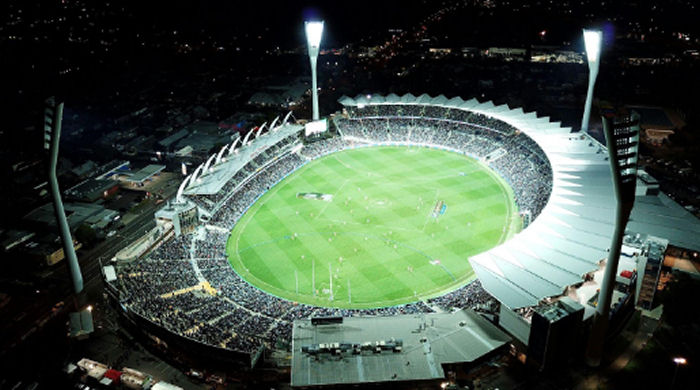 source: unsplash
source: unsplash
Has the Australian Football League developed a culture of concealment? According to pundits, recent remarks made by the current AFL general manager of football operations, Laura Kane, on Footy Classified is confirmation of concealment in Australian Football. Many say the Australian Football League has transitioned from a culture of openness to personal criticism and public noise to one more focused on public relations. So, what did Laura Kane say? More importantly, how has the AFL developed a culture of concealment? We cover these and more about AFL transparency issues, but first, let’s examine the context of AFL GM’s recent remarks.
Angus Brayshaw’s Forced Retirement
Angus Brayshaw signed a multi-million-dollar contract with Melbourne FC. He was supposed to play for the club for five years. Unfortunately, he was forced to retire after an objective medical assessment of his brain deemed it unsafe for him to continue playing. This simply means Melbourne FC will have one player less but still have to make contractual payments to Brayshaw. Logically, part of his contractual payments should be excluded from Melbourne FC’s player payment caps. Otherwise, the Demons will be playing with a smaller salary cap and without one of their most valuable players for the coming five years.
AFL GM’s Comments on Footy Classified
Laura Kane, AFL’s GM of football operations, was asked whether Melbourne Football Club’s Angus Brayshaw’s contract payments would be outside the club’s salary cap following his forced retirement. To preface this question, the Australian Football League has a salary cap for all clubs to ensure fair play. Clubs must not spend beyond the cap by paying players more or acquiring deeper squads to see them gain an advantage over clubs with lesser finances. When asked this question, Laura Kane answered, “It’s not a topic we talk about.” The GM made it clear the Australian Football League doesn’t discuss the complexities of the total player payments (TPP) or salary cap.
A revised response was released stating that Melbourne FC had not formally applied to treat Brayshaw’s TPP. However, the response raised even more questions. Australians are known for their culture of openness. They don’t mind being the world’s leading gamblers, particularly when it comes to engaging with top Australian online casinos to play.
In fact, dozens of
casinos reviewed by ALDC are licensed abroad and Aussies love them. That is why many felt that the Australian Football League could have easily clarified Angus Brayshaw’s contract situation by directly answering the question. Instead, it became the latest of many AFL public relations endeavours. Unfortunately, this is nothing new.
AFL’s New Culture of Concealment
 source: unsplash
source: unsplash
Like most football leagues, the AFL is not without conspiracies and AFL media relations aren’t necessarily a bad thing. However, the public is more concerned about the current climate, which has concealed previously available information. Everyone knows Brayshaw’s forced retirement was no one’s fault, and there’s nothing Melbourne FC or the player can do about it. It seems like an unfair penalty for the Demons to go five years with a disadvantaged squad and a limited salary cap.
However, the AFL's refusal to answer basic questions about salary cap rules and issues involving public trust is unbecoming. Recently, the AFL has been accused of withholding information, managing public relations, and controlling the narrative around controversial issues. Critics have raised concerns about the increased commercialisation and focus on media management strategies. The perceived culture of concealment has deep roots, given the recent events showcasing a lack of transparency in the AFL. Here are three instances:
1. Hiding AFL Executives’ Salaries
Back in 2016 and before that, the salary of AFL CEOs was a public record. Since then, the Australian Football League has only published an annual report of the aggregate salaries of all executives. The public can no longer determine how much an exec makes like they could with former AFL CEO Andrew Demetriou.
2. Hiding AFL Player Drug Strikes
Until 2015, the public knew AFL players who had drug strikes or those with detections/positive drug tests under the league’s illicit drug code. Since then, this number has become secret. Somewhere along the way, it was determined that these were AFL controversies and shouldn’t be discussed in the public eye.
3. Lack of Transparency about Variable Funding
AFL clubs should be routinely informed about what their 17 rivals receive in
variable funding. Unfortunately, they’re only given a short window to ascertain the figures, which involves subtracting various amounts from tables of figures. Two years ago, after much digging, the AFL published an annual report of what clubs received. However, the report featured extraneous funding, including travel dollars, prize money, and even the self-generated AFL membership. It was a perfect showcase of AFL scandal management.
Final Thoughts
The AFL has adopted a perceived culture of concealment. According to critics, this tenure began during the stewardship of Gillon McLachlan, who was less combative than former CEO Demetriou. While McLachlan was successful in keeping the AFL afloat during the tumultuous
COVID-19 months, we let reputation and revenue take precedence. It’s now upon McLachlan’s more prudent and temperate successor Andrew Dillon, to differentiate his stewardship. However, with AFL player weights no longer being published in 2024 and questions about salary caps deemed undiscussable, it's doubtful that Dillon will bring the Australian Football League back to the days when transparency was everything.
-
A-League